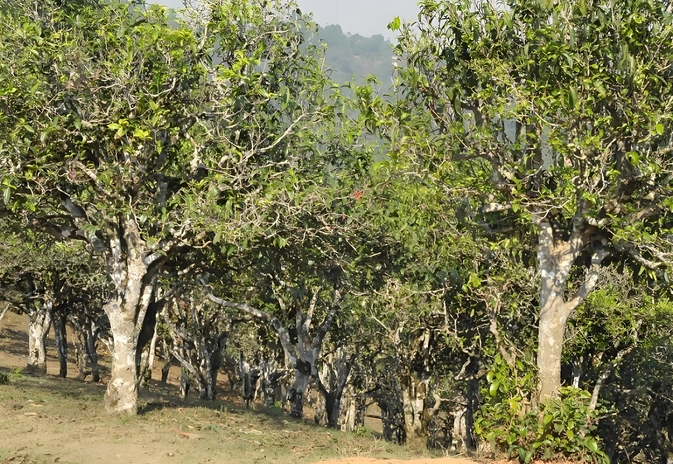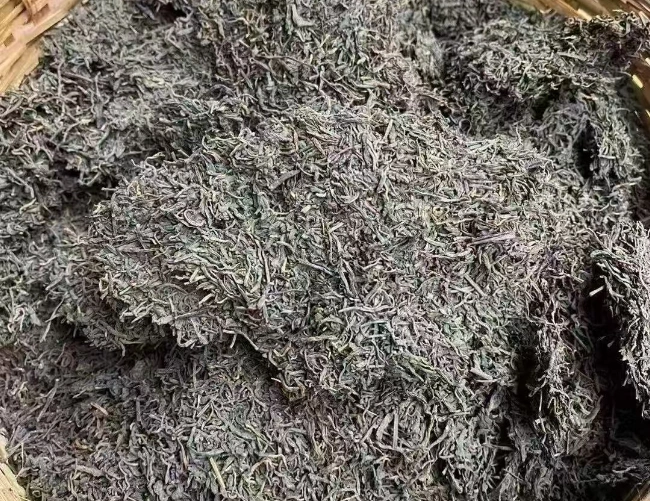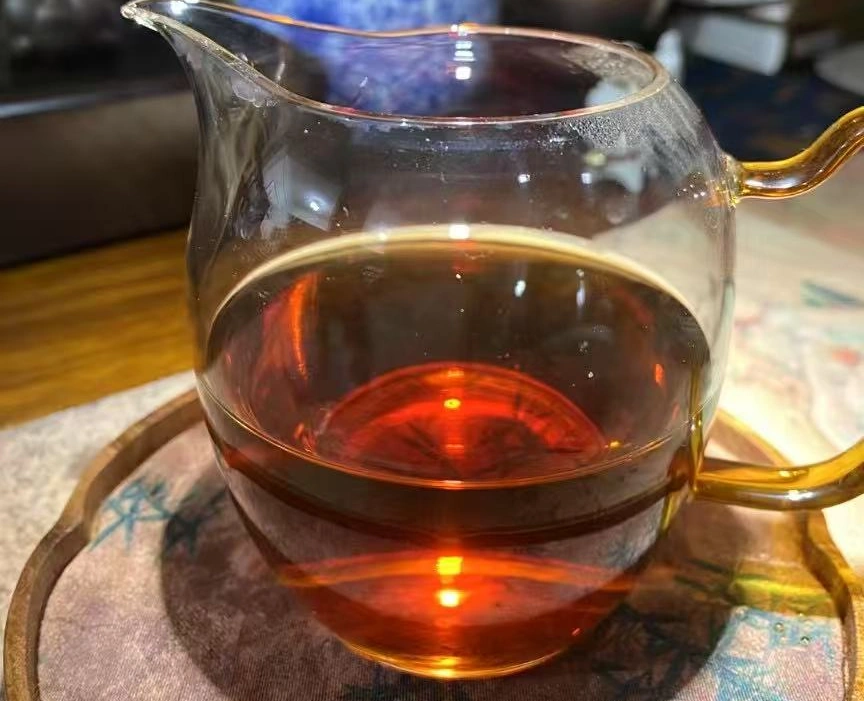Dark tea types open the door to a world of deep, layered flavors and ancient craftsmanship. Picture unwrapping a compressed tea cake and inhaling its warm, earthy aroma—hints of damp forest floor, sun-baked clay, and a whisper of honeyed sweetness. Whether it’s the mellow maltiness of Guangxi’s Liubao tea or the complex camphor notes of aged Pu-erh, each dark tea type offers a sensory journey that rewards curiosity.
In this guide, we’ll explore China’s most celebrated fermented teas, from Guangxi dark tea and Anhua dark tea to the famed Fu brick tea (Fuzhuan Cha) and beyond. You’ll learn what makes each type unique, how they differ from delicate oolong, and how to choose, brew, and savor these time-honed treasures.

What Is Dark Tea? Key Characteristics & Definitions
Dark tea—known as “Hei Cha” in Chinese—is defined by its post-fermentation process. Unlike green, black (red), or oolong teas, dark teas undergo:
- Microbial Fermentation: Fresh or semi-oxidized leaves are piled and moistened, encouraging beneficial molds and bacteria to transform catechins into theabrownins and other rich compounds.
- Controlled Aging: Teas are then stored in porous containers at moderate temperature and humidity, allowing slow oxidation that deepens flavor over months or years.
These steps yield dark tea types with a characteristic reddish-brown liquor, earthy aroma, and a smooth, rounded mouthfeel that feels like liquid velvet.
Guangxi Dark Tea
Liubao Tea (Flowery & Aged Styles)
Hailing from Guangxi province, Liubao tea is prized for its cool-storage aging and gentle post-fermentation. Young Liubao bursts with fresh malt sweetness and floral undertones, while aged Liubao deepens into notes of toasted grains, dried fruit, and a subtle woodiness. Sip a cup and you’ll taste the region’s limestone hills and mist-shrouded valleys.
Regional Subtypes & Flavor Profiles
Within Guangxi, micro-terroirs give rise to distinct dark tea types: some gardens yield teas with brisk almond notes, others echo ripe pear or honeycomb. Whether you prefer a lighter, fragrant infusion or a bold, roasted cup, Liubao’s diversity ensures there’s a style to match every palate.

Hunan Dark Tea
Anhua Dark Tea (Anhua Hei Cha)
From Hunan province comes Anhua dark tea, renowned for its supple texture and warming character. Anhua Hei Cha is pressed into bamboo-wrapped bricks, where indigenous microbial communities—unique to local cellars—impart a nuanced earthy sweetness. The result is a comforting, rugged brew that evokes ancient forest trails and wood-smoke hearths.
Fu Brick Tea (Fuzhuan Cha) & Its Unique “Golden Flowers”
A star among dark tea types, Fu brick tea (Fuzhuan Cha) contains prized “golden flowers” (Eurotium cristatum). These amber-colored spores bloom within the brick, creating tiny yellow flecks that shimmer like embers. Their enzymes enrich the tea’s sweetness, producing a mellow, honey-like finish that soothes both palate and spirit.
Yunnan Dark Teas Beyond Pu-erh
Sheng vs. Shou Pu-erh
While Pu-erh is often synonymous with dark tea, it actually encompasses two dark tea types:
- Sheng (Raw) Pu-erh: Lightly processed; leaves are sun-wilted, rolled, and compressed, then naturally aged. Early vintages taste grassy and brisk; decades-old cakes evolve into a silky, camphor-tinged nectar.
- Shou (Ripe) Pu-erh: Introduced in the 1970s, pile fermentation accelerates aging—creating a rich, chocolaty, mellow cup in weeks rather than years.
Lesser-Known Yunnan Fermented Blends
Beyond Pu-erh, Yunnan producers experiment with mixed-leaf blends and small-batch post-fermentation. These emerging dark tea types can surprise with fruity esters, toasty nuts, or mineral accents—proof that innovation thrives alongside tradition.

Production Processes & Aging: How Types Diverge
Although all dark tea types share fermentation and aging, variations in technique create signature profiles:
- Pile Duration: Shorter for gentle teas like early Liubao; longer (50–60 days) for robust Shou Pu-erh.
- Storage Environment: Cool, stable cellars for Anhua; humid mountain caves for Sheng Pu-erh.
- Microbial Cultures: Wild-harvested molds in Hunan vs. selected starter cultures in modern Yunnan factories.
By understanding these factors, you can appreciate why Liubao feels light and floral, while Fu brick tea embraces you with inky sweetness.
Dark Tea vs. Oolong Tea: Fermentation & Oxidation Differences
Oolong teas occupy the middle ground between green and black—partially oxidized and quickly dried to preserve floral aromas. In contrast, dark tea types:
- Undergo a second, microbial fermentation, which transforms flavors far beyond what simple oxidation achieves.
- Age gracefully over months or years, allowing slow chemical changes that round out tannins.
- Result in deeper hues (copper to dark mahogany) and earthier scent profiles, ideal for those who crave intensity and depth.
If oolong is a bright, early-morning hymn, dark tea is a contemplative evening sonata.
How to Choose the Right Dark Tea Type for Your Palate
- Flavor Intensity: Newcomers might start with a lightly aged Liubao or young Shou Pu-erh—approachable, sweet, and forgiving.
- Aroma Preferences: Seek Fu brick tea for honeyed warmth, or Sheng Pu-erh for fresh camphor lift.
- Age & Storage: Recent vintages deliver livelier notes; older cakes offer mellower, luxe complexity.
- Leaf Form: Loose samples let you adjust strength; compressed cakes and bricks make gorgeous gifts and long-term cellaring projects.
Brewing Tips for Different Dark Tea Types
- Water Temperature: 95–100 °C for most dark teas; slightly cooler (~95 °C) for delicate Sheng Pu-erh under five years old.
- Leaf-to-Water Ratio: Aim for 5–8 g per 120 ml.
- Rinse & Awaken: A quick 5 – 10 s rinse washes away dust and jump-starts aroma.
- Infusion Times:
- First steep: 30 s–1 min
- Subsequent: +15 s each
Use a gaiwan or small teapot to appreciate aroma and repeat infusions—many dark tea types reveal new facets with each brew.

🔗 To learn more about how to make tea, check out Tanbiwencha’s YouTube video explaining how to make tea.
Health Benefits of Various Dark Tea Types
Research suggests dark tea types harbor compounds—polyphenols, theabrownins, and prebiotic polysaccharides—that:
- Support healthy digestion and gut flora.
- Help regulate blood lipids and promote cardiovascular well-being.
- Provide antioxidant protection, shielding cells from oxidative stress.
While individual effects vary by type and age, a daily cup of your favorite fermented tea can become both a sensory delight and a wellness habit.
Where to Buy Authentic Dark Teas Online & Offline
- Specialty Tea Houses: Look for shops that list production date, region, and storage conditions.
- Reputable Online Vendors: Seek reviews, certifications, and clear photos of dry leaves and compressed cakes.
- Local Tea Tasting Events: Sampling in person helps you gauge aroma and mouthfeel before committing.
Avoid bargain bins—authentic dark tea types demand craftsmanship, and quality leaves cost a bit more.
Conclusion & Tasting Recommendations
From the malty embrace of Guangxi’s Liubao tea to the glittering “golden flowers” of Fu brick tea, China’s dark tea types showcase the transformative power of fermentation and time. Whether you’re a seasoned pu-erh collector or a curious newcomer, these teas invite you to slow down, breathe in deep, and savor each layered sip. Try them side by side, note the evolving aromas, and let each cup unlock a new chapter in your tea journey. Embrace the rich tapestry of dark tea—and discover why these fermented treasures have captivated palates for centuries.



